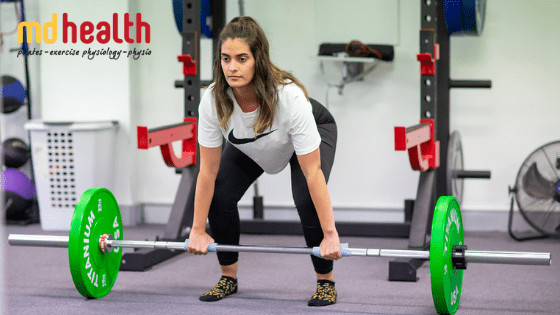Guidelines to building muscle
When planning a work out specifically for building muscle; consider more than whether you do a full body workout or a spilt body program. The number of workouts a week, your nutrition, your sleep and what other exercises you do all contribute to you achieving your goals.
Volume of exercise, full body verses muscle group split
In general, to get the most out of a workout and build muscle the following exercises are the most effective:
- Major Olympic lifts, such as deadlifts, squats, bench press, bent-over row etc
This is because they use a large number of muscle groups to their maximum ability. Therefore they are great at helping to build muscle.
To get the best from a workout, I would recommend choosing 1-2 major lifts per session. This allows you to work the muscles to fatigue, and give the muscles a stimulus to grow and adapt. If you choose to do every lift and muscle group per session, you just won’t be able to work each lift and muscle group to it’s maximum potential. Therefore, the stimulus to adapt is lower and the muscle growth effect is less.
If you choose 2 lifts per session, performing 3-4 training sessions per week you will work all your major muscle groups over a week period. With most lifts performed 1-2 times a week.
Nutrition needs for building muscle
The next important aspect is the right nutrition at the right time. Its great to lift and stimulate the muscles to grow, but if your body doesn’t have the nutrition it needs to grow, you won’t get the best results.
Immediately prior to your work out, having some high quality protein (containing all the amino acids). Also eat a small amount of fast acting (high glycaemic index) carbohydrates, such as a banana. This will give the body an immediate fuel to use during your workout. In addition, planning a full meal containing of high quality protein (both fast acting and slow acting carbohydrates) is important within the first 3 hours after your workout. This will take full advantage of the growth stimulus effects of the workout and building muscle.
Finally, it is important not to skip meals. Diets such as intermittent fasting diets are aimed at losing weight (by reducing total kilojoule intake), but have a catabolic (breaking down) effect on muscle and make it harder to achieve your goal.
The underestimated importance of sleep for muscle building
If you are serious about building muscle, you need good quality sleep. This is because, the muscle growth effect and the natural release of growth hormone occurs primarily when you sleep, not when you are awake. This occurs specifically in the third stage of non-REM sleep, when the growth effects are the largest. During the REM portion of sleep, your brain works on. It remembers better co-ordination of movement and this helps the progression of your lifting potential. Plan for at least 6 hours, but ideally 8 hours of sleep after your workout days. You will otherwise struggle to achieve your muscle building goals.
The additional stability exercises, to compliment your major lifts
Finally, to get the most from your workout, Olympic lifts alone are not enough. It is important to incorporate exercises that work on the muscle groups that help “set your body up” to get the best results. This means also training the major stabilising muscle groups that work together with the power muscle groups that are essential for lifting. For example, to do a deadlift effectively, the stabilisers of the lower back (the multifidus muscles group) and the muscles at the side of the hips (gluteus medius and gluteus minimus) need to be working. This allows the major muscle group (Gluteus maximus) to do it’s work more effectively. If these muscles do not activate and do their job, the load on the back and other structures is too great and can cause injuries.
Exercises that work on the stabilising muscle groups should be performed in the warm up stage of your workout. They should also be between sets to keep the stabilisers active during your workout.
Reference : Thomson, H. Discover your Inner Strength. The Scientist. 18th April 2020, No 3278, p. 34-38
Source: The Brain: A User’s Guide – purchase here
Do you have any questions?
- Call us on (03) 9857 0644 or (07) 3505 1494 (Paddington)
- Email us at admin@mdhealth.com.au
- Check out our other blog posts here
Our clinical staff would be happy to have chat if you have any questions.



